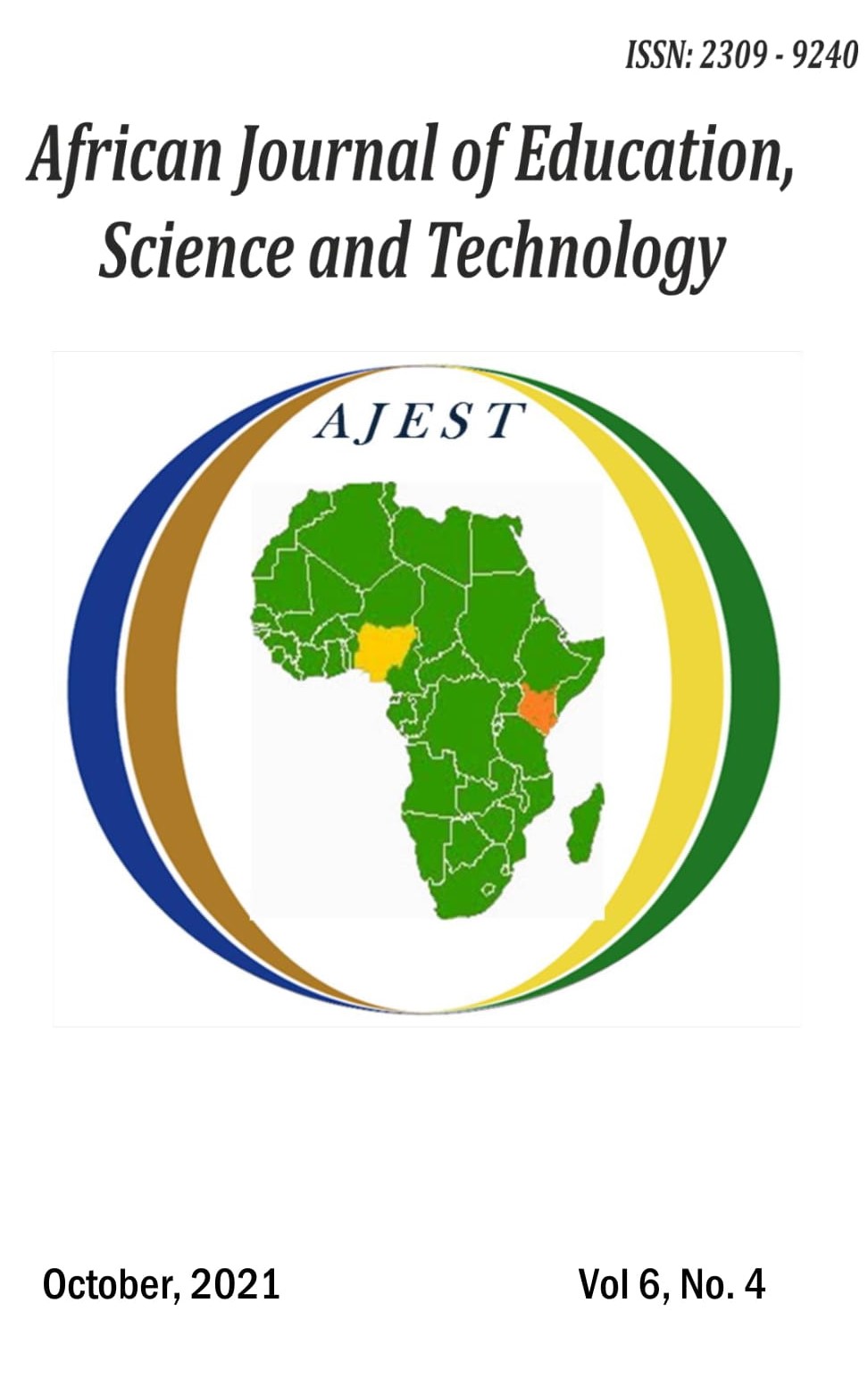Influence of Physical Resource Infrastructure on Health Sector Service Delivery in Nyeri County, Kenya
##article.abstract##
The effect of physical resource infrastructure on health sector service delivery has been a major concern among health practitioners on health sector service delivery system. These include human resource and physical facilities at primary, secondary and tertiary levels of the health sector. The sector requires well maintained functional equipment and other resources, as well as trained personnel to operate and repair them. The study adopted convergent design to integrate both qualitative and quantitative data analysis. The target population of 916 health workers and a sample size of 266 were used in the study. The study contributes to the theory by giving physical resource infrastructure components through which health sector can reciprocate in order to enhance service delivery among its workforce. This study was undertaken in the context of a devolved health system in Kenya focusing on Nyeri County, three sub-county hospitals and one level five referral hospital. The study findings revealed that physical resource infrastructure has significant and positive effect on service delivery. Health sector administrators will use the findings of the study to formulate policies that enhance quality of service delivery. Physical infrastructure is a key component in determining the level of health sector service delivery.
References
Bossert, T. J., & Beauvais, J. C. (2003), Decentralization of health systems in Ghana, Zambia, Uganda and the Philippines: a comparative analysis of decision space. Health policy and planning 17(1), 14-31
Boshoff, C., & Gray, B. (2004). The relationship between service qualities, Customer Satisfaction and Buying Intentions in the Private Hospital Industry. South African Journal of Business Management, 35(4), 27-37.
Carrillat, F.A., Jaramillor, F., & Mulki, J.P. (2007). The Validity of the SERVQUAL and SERVPERF Scales. A Meta-Analytic View of 17 Years of Research across Five Continents. International Journal of Service Industry Management, 18(5), 472-490.
Gatero, G.M. (2011). Utilization of ICTs for accessing health information by Medical professionals in Kenya. A case study of Kenyatta National Hospital; Journal of Health Information in Developing Countries. Jersey: Prentice Hall
Herzberg F., (1969). Work and nature of man (3rd Edition). Cleveland; Ohio: World Publishing Co.
Kilonzo, S., Kamaara, E. & Magak, K. (2017). Improving Access to Maternal Health Care through Devolution in Western Kenya: Interrogating Decentralization in Africa. IDS Bulletin, 48(2), 91-108
Kombo D.K. &Tromp L.A. (2006), Proposal and Thesis Writing: An Introduction Nairobi: Paulines Publications
KPMG (2015), Devolution of Healthcare Services in Kenya.
KPMG Africa, (2014), Devolution of Healthcare Services in Kenya, https://www.kpmg.com/Africa/en/IssuesAndInsights/Articles Publications/Documents/Devolution%20of%20HC%20Services%20in%20Kenya.pdf, accessed 8 September 2015.
MoH (2014) Kenya Health Sector Reforms and Roadmap Towards Universal Health Coverage
MoH (2015). Kenya Demographic and Health Survey (KDHS), Key Health Indicators Ministry of Health, 2014, Kenya Health Policy 2012–2030,Nairobi: Ministry of Health.
Muoko, B. and Baker C., (2014). Decentralization and Rural Service Delivery in Uganda, Kampala: International Food Policy Research Institute.
Mwai, D., Barker, C., Mulaki, A. & Dutta, A. (2014). Assessing county health system readiness in Kenya: A review of selected health inputs. Retrieved from www.healthpolicyproject.com 26/11/2016
Mwangi, C., (2013). Accessibility to the Kenyan Healthcare System: Barriers to Accessing Proper Healthcare, unpublished PhD thesis, Arcada University.
Ndavi, P. M., et al (2009). Decentralizing Kenya’s Health Management System: An Evaluation. Kenya Working Papers No. 1. Calverton, MD: Macro International Inc.
Njuguna, J., Mwangi, P., & Kamau, N. (2014). Incentives among health workers in a remote Kenyan district: implications for proposed county health system. J Health Care Poor Underserved, 25(1), 204-214.
Robbins, S.P., (2001). Organizational Behaviour in South Africa, 9th Edn. New
World Bank (2014). Laying the Foundation for a Robust Health Care System in Kenya. Kenya Public Expenditure Review. World Bank Group
World Health Organization (2010). Countdown to 2015-decade report (2000–2010): Taking Stock of Maternal, Newborn and Child Survival. Geneva: WHO and UNICEF


